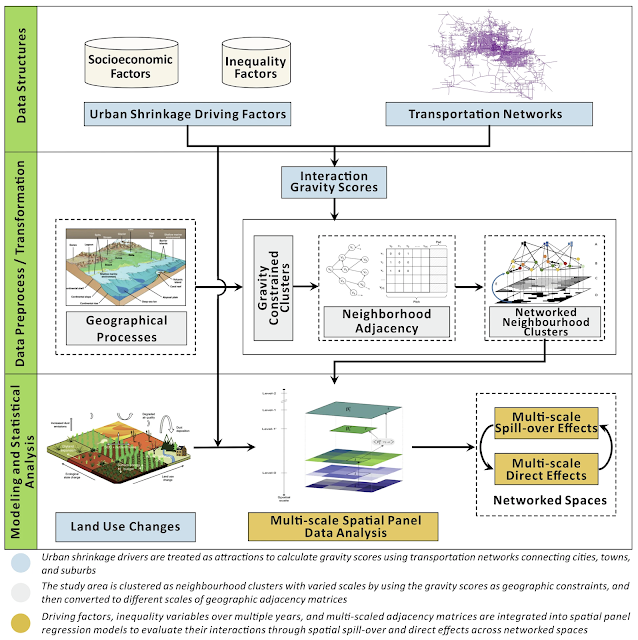While we have explored disasters in the past through agent-based models and other computational social science approaches, one area we have not explored is how one can use agent-based models to explore evacuations durring a wild fire event. This has now changed with a new paper with Zhongyu Zhou and myself entitled "Modeling Wildfire Evacuation with Embedded Fuzzy Cognitive Maps: An Agent-Based Simulation of Emotion and Social Contagion" which was recently presented at the 2025 International Conference of the Computational Social Science Society of the Americas (CSSSA).
In the paper we present an agent-based model combined with an embedded fuzzy cognitive map (FCM) to simulate residents’ evacuation behavior during a wildfire event. If this sounds of interest, below we provide the abstract to the paper along with some of the figures that showcase the model logic and some of its results. A detailed ODD, the model and the data needed to run the model can be found at: https://github.com/ozzyzhou99/LA-Wildfire-Model/. Finally, at the bottom of the post you can find the full referece to the paper and a link to it.
Abstract:
Wildfires are becoming increasingly dangerous, especially in densely populated fire-prone areas like Los Angeles. People’s evacuation decisions during wildfire events are influenced by many factors, including emotions such as fear or panic, which often affect people’s choices to evacuate. Traditional evacuation models often assume that individuals behave rationally. As a result, these models tend to overlook the influence of emotional factors on evacuation behavior. To address this issue, this study develops an agent-based model (ABM) combined with an embedded fuzzy cognitive map (FCM) to simulate residents’ evacuation behavior during a wildfire event. The model covers two types of agents: evacuees and rescuers. It focuses on how emotions change over time and how they spread among people. While we also expect to observe how these emotional changes will affect evacuation decisions. This research also considers differences between different income groups to explore whether low-income residents are more likely to panic. Results from the model show that agents with different emotions behave differently during the evacuation process. Emotional changes clearly affect how agents choose routes and whether they can respond quickly. In addition, the results suggest that income level affects emotional responses, and low-income groups are more likely to feel fear. This study highlights the value of using ABM and FCM together to better understand evacuation behavior and provides a new idea for developing fairer and more effective disaster response plans.
Keywords: Agent-Based Modeling, Emotional decision-making, GIS, Fuzzy Cognitive Map, Wildfire Evacuation.
 |
| Data used in the setting up the model experiment. (A) is household income data, (B) is location of previously affected houses, and (C) is evacuation road data. |
 |
| Agent-level embedded FCM loop with social contagion. |
 |
| Evacuees’ Workflow (A), Rescuers” Workflow (B). |
Zhou, Z. and Crooks, A.T. (2025), Modeling Wildfire Evacuation with Embedded Fuzzy Cognitive Maps:An Agent-Based Simulation of Emotion and Social Contagion, Proceedings of the 2025 International Conference of the Computational Social Science Society of the Americas, Santa Fe, NM. (pdf)











